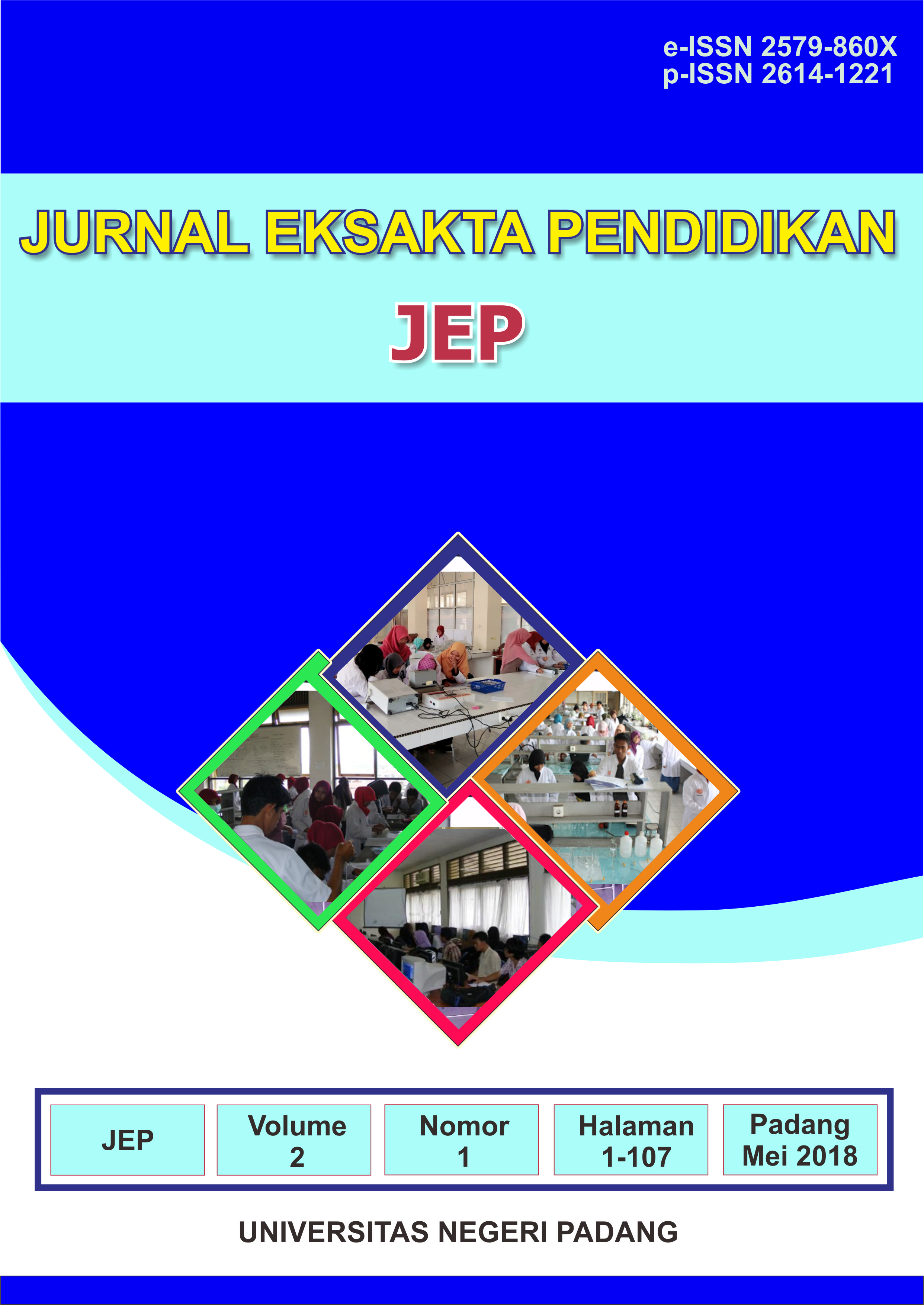Pengembangan Lembar Kerja Peserta Didik Berbasis Problem Based Learning Berbantuan Komik untuk Meningkatkan Creative Thinking Skill Peserta Didik pada Materi Gerak Lurus
Abstract
Based on the low value of learners' learning outcomes, one of the reasons is the teachers have not been able to compose learning materials in accordance with the demands of the curriculum. Learning model by teachers have not been able to guide the students in learning. Therefore, it is necessary to develop learning materials by PBL. This study was aimed to develop learning materials the from Student Worksheet by PBL assisted comics to linear motion subjects with valid, practical, and effective. Methodology of this study was research and development. The development model used was 4-D model consist of define, design, development, and disseminate. In the define phase, it was done curriculum, student, and material analysis.The result of the study in the define phase about curriculum analysis was obtained Core Competence and Basic Competence 3.3 and 4.3. The analysis of students was obtained that level of creative thinking skill of students of class X IPA 2 MAN Sebukar are in the low category. The analysis of material was obtained linear motion. In the design phase, it was obtained initial draft of Student Worksheet by PBL assisted comics that consist of Lesson Plan, Student Worksheet, and assessment. In the development phase, it was obtained Student Worksheet by PBL assisted comicswhich has valid criteria (0,86), practically criteria (94%), and effective for cognitive aspects (76%), effective in improving creative thinking skills (79%) are in the category of very creative, the category character becomes a habit (86%), and skill was (87%). In the disseminate phase, it was obtained effective for kognitive aspects (76,9%), effective in improving creative thinking skills (78,4%) are in the category of very creative, the category character becomes a habit (84%), and skill was (81,9%).
Downloads
References
Azwar, Saiffuddin. (2015). Reliabilitas dan Validitas. Yogyakarta: Pustaka Pelajar.
Barell. (2007). Handbook Of Cosmetic Science And Technology. Jurnal New York: Informa Healthcare. Vol. 3. (Diakses 14 April 2016)
Depdiknas. (2008). Kurikulum Tingkat Satuan Pendidikan. Jakarta : Depdiknas
Festiyed. (2015). Studi Pendahuluan Pengimple mentasian Kurikulum 2013 dalam Mengintegrasikan Pendekatan Saintifik Melalui Model Inkuiri dan Authentic Assessment dalam Pembelajaran IPA di Kota Padang. Padang : Universitas Negeri Padang.
Greenstein. (2012). Assessing 21st Century Skill A Guide To Evaluating Mastery and Authentic Learning. Jurnal United States Of America : Corwin. Vol. 3, (Diakses 14 April 2016)
Gumelar. (2011). Comic Making Part 1. http://www.lulu.com/. (Diakses 1 Mei 2016)
Hake, R.R. (1999). Analizing Change/Gain Scores. [Online]. Tersedia: http://www. physics.indiana.edu/~sdi/AnalyzingCange-Gain.pdf. (Diakses 16 Agustus 2016)
Munandar. (2009). Mengembangkan Bakat dan Kreativitas Anak Sekolah. Jakarta: Pt Gramedia
Ningsih. (2011). Komparasi Kemampuan Berpikir Kreatif Matematis Siswa Menggunakan Pembelajaran Matema tika Humanistik Dan Problem Based Learning dalam Setting Model Pelatihan Innomatts. Semarang : Universitas Negeri Semarang
Riduwan. (2008). Dasar-Dasar Statistika. Bandung : Alfa Beta
Siswono. (2008). Model Pembelajaran Matema tika Berbasis pengajuan dan Pemecahan Masalah untuk Meningkatkan Kemampu an Berpikir Kreatif. Surabaya: Unesa University Press
Sudjana. (2005). Media Pengajaran. Bandung: PT Sinar Baru
Sugiyono. (2008). Metode Penelitian Kuanti tatif, Kualitatif, Dan R&D. Bandung: Alfabeta
Sukmadinata. (2005). Landasan Psikologi Proses Pendidikan. Bandung: PT Rosda Karya
Thiagrajan. (1974). Instructional Development For Training Teachers Of Exceptional Children. Indiana : Indiana University Bloomington
Trianto. (2007). Model-model Pembelajaran Inovatif Berorientasi Konstruktivistik. Jakarta : Prestasi Pustaka

This work is licensed under a Creative Commons Attribution 4.0 International License.




_(2579-860X).png)
_(2614-1221)1.png)




